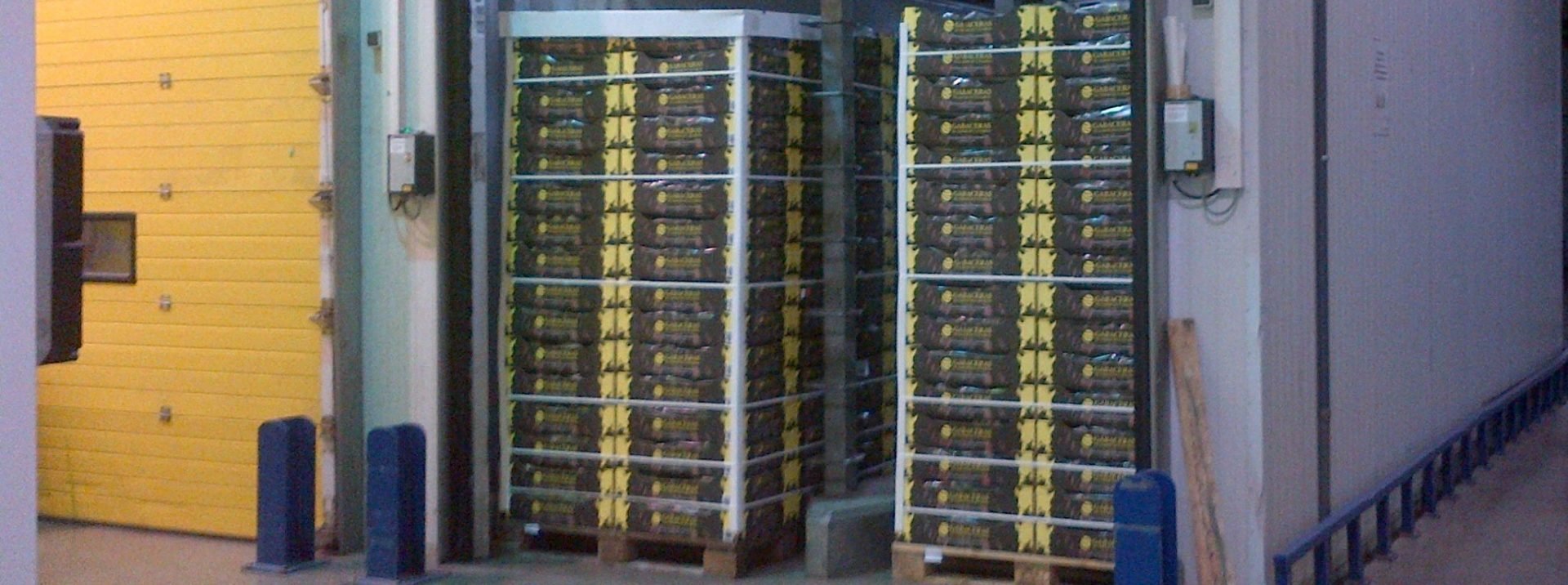In general, cooling is the foundation of produce quality protection. It extends the shelf life of fresh produce by reducing the rate of physiological change (respiration, ethylene production, enzymatic processes, and water loss) and by slowing the growth of microorganisms.
Proper pre-cooling has several benefits:
- Preventing quality loss as a result of softening by suppressing enzymatic degradation and respiratory activity;
- Forestalling wilting by slowing water loss;
- Decreasing the rate of produce decay by inhibiting microbial growth (fungi and bacteria);
- Reducing the rate of ethylene production; and
- Minimizing the impact of ethylene on ethylene-sensitive produce.
Within hours of harvest, fresh produce held at ambient temperatures can suffer irreversible losses in quality. Even for chilling-sensitive commodities such as tomatoes, it is essential to remove excessive field heat quickly after harvesting. Particular rapidly developing decays such as bacterial soft rot can develop within a few hours after harvest if the tomato pulp temperature is 30°C (86°F). In contrast, at 16-20°C (61-68°F), the same decay will not appear for several days.
Commercial pre-cooling for perishable fresh produce aspires to rapidly remove at least 7/8 of the field heat from the crop by a compatible cooling method. Field heat is the difference in temperature between the temperature of the crop harvested and the optimal storage temperature of that product. The time required is known as the “7/8 Cooling Time”. Removal of the remaining 1/8 occurs during subsequent refrigerated storage and handling, with little detriment to the product.
Precooling methods include room cooling, hydro-cooling, forced-air cooling, vacuum cooling, and use of ice.
To achieve optimal cooling results
- The product must remain in the precooler for sufficient time;
- The cooling medium (air, water, or crushed ice) must be maintained at a constant temperature throughout the cooling period;
- The medium must have continuous, intimate contact with the surfaces of the individual products.
The table ‘Comparing of pre-cooling methods as applied to fresh fruits and vegetables’ summarizes the trade-offs of the various pre-cooling methods in terms of cooling times, water contact with the product, moisture loss (%) caused to the product, initial capital cost, and energy efficiency.
In a forced-air cooling refrigerated room, the air is drawn at a high flow rate through especially stacked containers or pallets. The product should be promptly removed from the forced-air precooler upon achieving 7/8 Cooling.
Forced-air cooling is recommended for most of the fruit-type vegetables and is especially appropriate for tomatoes that are susceptible to infiltration of water-borne decay organisms. An additional benefit to forced-air cooling immediately after harvest is that it tends to dry wounds, which decrease the chances for decay growth.
The following table ‘Cooling methods and storage conditions of tomatoes’ summarizes the recommended storage conditions and cooling methods for tomatoes.




